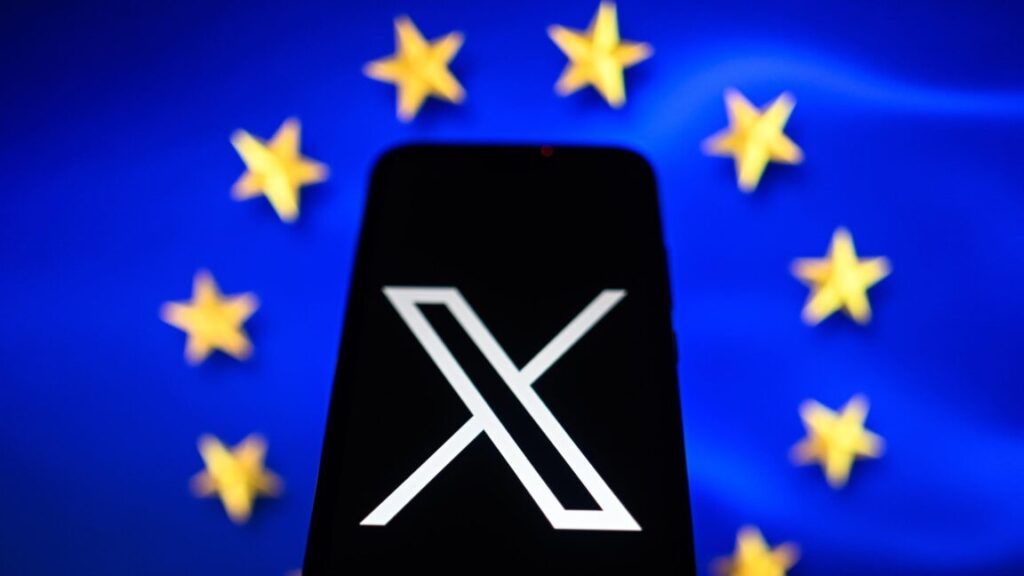Elon Musk wants to be “AGI dictator,” OpenAI tells court
Elon Musk’s “relentless” attacks on OpenAI must cease, court filing says.
Yesterday, OpenAI counter-sued Elon Musk, alleging that Musk’s “sham” bid to buy OpenAI was intentionally timed to maximally disrupt and potentially even frighten off investments from honest bidders.
Slamming Musk for attempting to become an “AGI dictator,” OpenAI said that if Musk’s allegedly “relentless” yearslong campaign of “harassment” isn’t stopped, Musk could end up taking over OpenAI and tanking its revenue the same way he did with Twitter.
In its filing, OpenAI argued that Musk and the other investors who joined his bid completely fabricated the $97.375 billion offer. It was allegedly not based on OpenAI’s projections or historical performance, like Musk claimed, but instead appeared to be “a comedic reference to Musk’s favorite sci-fi” novel, Iain Banks’ Look to Windward. Musk and others also provided “no evidence of financing to pay the nearly $100 billion purchase price,” OpenAI said.
And perhaps most damning, one of Musk’s backers, Ron Baron, appeared “flustered” when asked about the deal on CNBC, OpenAI alleged. On air, Baron admitted that he didn’t follow the deal closely and that “the point of the bid, as pitched to him (plainly by Musk) was not to buy OpenAI’s assets, but instead to obtain ‘discovery’ and get ‘behind the wall’ at OpenAI,” the AI company’s court filing alleged.
Likely poisoning potential deals most, OpenAI suggested, was the idea that Musk might take over OpenAI and damage its revenue like he did with Twitter. Just the specter of that could repel talent, OpenAI feared, since “the prospect of a Musk takeover means chaos and arbitrary employment action.”
And “still worse, the threat of a Musk takeover is a threat to the very mission of building beneficial AGI,” since xAI is allegedly “the worst offender” in terms of “inadequate safety measures,” according to one study, and X’s chatbot, Grok, has “become a leading spreader of misinformation and inflammatory political rhetoric,” OpenAI said. Even xAI representatives had to admit that users discovering that Grok consistently responds that “President Donald Trump and Musk deserve the death penalty” was a “really terrible and bad failure,” OpenAI’s filing said.
Despite Musk appearing to only be “pretending” to be interested in purchasing OpenAI—and OpenAI ultimately rejecting the offer—the company still had to cover the costs of reviewing the bid. And beyond bearing costs and confronting an artificially raised floor on the company’s valuation supposedly frightening off investors, “a more serious toll” of “Musk’s most recent ploy” would be OpenAI lacking resources to fulfill its mission to benefit humanity with AI “on terms uncorrupted by unlawful harassment and interference,” OpenAI said.
OpenAI has demanded a jury trial and is seeking an injunction to stop Musk’s alleged unfair business practices—which they claimed are designed to impair competition in the nascent AI field “for the sole benefit of Musk’s xAI” and “at the expense of the public interest.”
“The risk of future, irreparable harm from Musk’s unlawful conduct is acute, and the risk that that conduct continues is high,” OpenAI alleged. “With every month that has passed, Musk has intensified and expanded the fronts of his campaign against OpenAI, and has proven himself willing to take ever more dramatic steps to seek a competitive advantage for xAI and to harm [OpenAI CEO Sam] Altman, whom, in the words of the president of the United States, Musk ‘hates.'”
OpenAI also wants Musk to cover the costs it incurred from entertaining the supposedly fake bid, as well as pay punitive damages to be determined at trial for allegedly engaging “in wrongful conduct with malice, oppression, and fraud.”
OpenAI’s filing also largely denies Musk’s claims that OpenAI abandoned its mission and made a fool out of early investors like Musk by currently seeking to restructure its core business into a for-profit benefit corporation (which removes control by its nonprofit board).
“You can’t sue your way to AGI,” an OpenAI blog said.
In response to OpenAI’s filing, Musk’s lawyer, Marc Toberoff, provided a statement to Ars.
“Had OpenAI’s Board genuinely considered the bid, as they were obligated to do, they would have seen just how serious it was,” Toberoff said. “It’s telling that having to pay fair market value for OpenAI’s assets allegedly ‘interferes’ with their business plans. It’s apparent they prefer to negotiate with themselves on both sides of the table than engage in a bona fide transaction in the best interests of the charity and the public interest.”
Musk’s attempt to become an “AGI dictator”
According to OpenAI’s filing, “Musk has tried every tool available to harm OpenAI” ever since OpenAI refused to allow Musk to become an “AGI dictator” and fully control OpenAI by absorbing it into Tesla in 2018.
Musk allegedly “demanded sole control of the new for-profit, at least in the short term: He would be CEO, own a majority equity stake, and control a majority of the board,” OpenAI said. “He would—in his own words—’unequivocally have initial control of the company.'”
At the time, OpenAI rejected Musk’s offer, viewing it as in conflict with its mission to avoid corporate control and telling Musk:
“You stated that you don’t want to control the final AGI, but during this negotiation, you’ve shown to us that absolute control is extremely important to you. … The goal of OpenAI is to make the future good and to avoid an AGI dictatorship. … So it is a bad idea to create a structure where you could become a dictator if you chose to, especially given that we can create some other structure that avoids this possibility.”
This news did not sit well with Musk, OpenAI said.
“Musk was incensed,” OpenAI told the court. “If he could not control the contemplated for-profit entity, he would not participate in it.”
Back then, Musk departed from OpenAI somewhat “amicably,” OpenAI said, although Musk insisted it was “obvious” that OpenAI would fail without him. However, after OpenAI instead became a global AI leader, Musk quietly founded xAI, OpenAI alleged, failing to publicly announce his new company while deceptively seeking a “moratorium” on AI development, apparently to slow down rivals so that xAI could catch up.
OpenAI also alleges that this is when Musk began intensifying his attacks on OpenAI while attempting to poach its top talent and demanding access to OpenAI’s confidential, sensitive information as a former donor and director—”without ever disclosing he was building a competitor in secret.”
And the attacks have only grown more intense since then, said OpenAI, claiming that Musk planted stories in the media, wielded his influence on X, requested government probes into OpenAI, and filed multiple legal claims, including seeking an injunction to halt OpenAI’s business.
“Most explosively,” OpenAI alleged that Musk pushed attorneys general of California and Delaware “to force OpenAI, Inc., without legal basis, to auction off its assets for the benefit of Musk and his associates.”
Meanwhile, OpenAI noted, Musk has folded his social media platform X into xAI, announcing its valuation was at $80 billion and gaining “a major competitive advantage” by getting “unprecedented direct access to all the user data flowing through” X. Further, Musk intends to expand his “Colossus,” which is “believed to be the world’s largest supercomputer,” “tenfold.” That could help Musk “leap ahead” of OpenAI, suggesting Musk has motive to delay OpenAI’s growth while he pursues that goal.
That’s why Musk “set in motion a campaign of harassment, interference, and misinformation designed to take down OpenAI and clear the field for himself,” OpenAI alleged.
Even while counter-suing, OpenAI appears careful not to poke the bear too hard. In the court filing and on X, OpenAI praised Musk’s leadership skills and the potential for xAI to dominate the AI industry, partly due to its unique access to X data. But ultimately, OpenAI seems to be happy to be operating independently of Musk now, asking the court to agree that “Elon’s never been about the mission” of benefiting humanity with AI, “he’s always had his own agenda.”
“Elon is undoubtedly one of the greatest entrepreneurs of our time,” OpenAI said on X. “But these antics are just history on repeat—Elon being all about Elon.”
Elon Musk wants to be “AGI dictator,” OpenAI tells court Read More »













